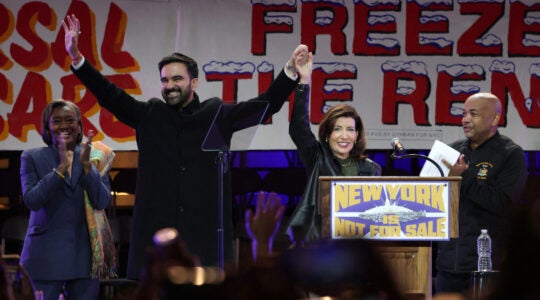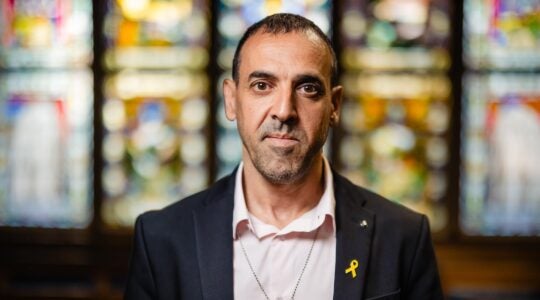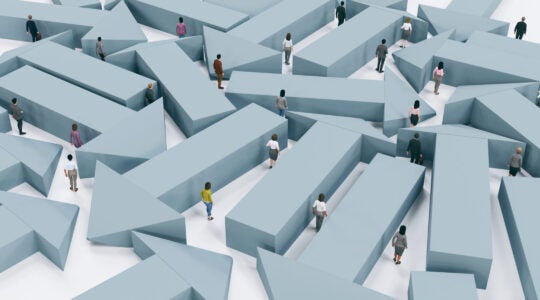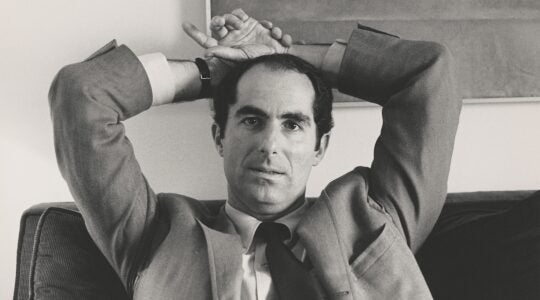For close watchers of the Jewish community, peering into the future (and fretting about it, as Jews seem to be a people whose DNA includes a built-in “worrier” gene) seems to be an occupational hazard. The most recent Pew surveys provide a glimpse, especially when it comes to the finding that the millennial generation is unmoored from formal institutions of all kinds, including Jewish ones. But the surveys raise as many questions as they answer.
So, taking a page from the headline of a 1957 article in National Jewish Monthly by American Jewish scholars Jacob Marcus and Oscar Handlin, what might the Jewish community look like in 2050?
The pessimists among us might posit whether there even will be a Jewish people, citing the high rates of intermarriage and growing patterns of assimilation. The optimists, in turn, would point to the creative sparks within Jewish life, the growth of serious Jewish learning, and the expansion of American Orthodoxy as reflections of renewal and continuity.
One cannot predict, for example, transformative moments, as represented by the founding of the State of Israel (1948) or the Six-Day War (1967), nor who could have imaged 9/11. The impact of these powerful events has served to transform the Jewish story.
Throughout their history Jews have experienced periods or cycles of political uncertainty. Are we likely to see over these next three decades any degree of upheaval that could impact the welfare and security of Jews? At different times Jewish personalities have inspired and given leadership to the Jewish people. Will such leadership emerge in the central decades of this century?
How politically influential will Jews remain? What will mid-century Jews be concerned about, and how will they express their political interests? The status of American Jewry is frequently compared to the overall “barometer” of the American success story. If this nation moves into decline, will American Judaism likewise fail? And correspondingly, if this society continues to flourish, will American Jews also remain in a prominent and secure place? Will we see a continuous rise in anti-Semitism? If so, the Jewish future may well be compromised by a return to self-protection and the downsizing of a visible Jewish public presence.
What will be the internal patterns of denominational and institutional connections? Which organizations will cease to be operational, and will other organizations or models of organizing replace the current ones? What will be the role of religion? Can we identify the educational/literacy patterns (secular and religious) of Jews? Will we need to ask what are the criteria or measures for being Jewish?
What will be the composition and character of the Jewish population? Will our numbers and character be significantly altered, as converts come to Judaism with varied backgrounds and upbringings, creating a distinctively “new Jew” with minimal memory or connection to the unfolding of the Jewish historical past?
Will there be two “American Judaisms,” one traditional and one liberal? Will there be efforts to create one or more forms of Christian-Jewish amalgamations of tradition, or some other “religious mix” that seeks to “blend” American faith communities?
What will the synagogue of 2050 be like? If America follows the pattern of religious decline that has framed the European experience, there may be more synagogues operating as museums than as religiously active communities of believers? Yet, there are often cycles of renaissance within religious communities leading to a rebirth of faith and practice. How much of Jewish life will operate as a virtual reality, as we move beyond institutional connections to an “individualized” Judaism?
What will be the financial health of the Jewish community? As a Jewish wealth class is reshaping today’s communal landscape, will we see a decline in the economic clout of the community or will we see a new infusion of resources, created by a new generation of entrepreneurs?
In a changing global economy with the expected advances in technology and communication, we are likely to see the re-distribution of Jews to various “knowledge” centers and new economic hubs. No doubt an increasing part of the Jewish community will be “privatized” as economic forces will create more incentives for a business model to replace the volunteer framework. Possibly, in light of many of these external and internal forces, will we remain a people, holding to some type of unified purpose and shared message?
What will be the tenor and focus of the Israel-diaspora partnership? In 2050 what will be the political status of the State of Israel? The larger issue involves the survival of the Jewish state. Such a notion is challenging and upsetting, beyond our comprehension. How will the nuclear competition that is likely to define the future of the Middle East (the Iran deal notwithstanding) impact Israel’s status? Beyond the various external threats to the Jewish state, one must also look inward asking if Jewish life can tolerate the growing religious, social and political divide that today defines Israeli society.
In summarizing the question: we in the U.S. will be a smaller community, with fewer resources, comprised of an even more diverse constituency than we know today, including a significantly large number of Jews by choice. Maybe the key element to this new stage of Jewish life in 2050 will be the geographical dispersion of Jews, including the presence of Jewish “colonies” living in Asia, across the Southern Hemisphere — possibly even in outer space. Judaism will again be redefining itself with the emergence of new forms of religious and social expression as it continues to adjust to the changing conditions of the marketplace. Jews will be caught between the push toward individualized, privatized forms of Jewish expression and the traditional volunteer framework of collective expression.
A possible first step in exploring this issue may be about identifying the questions we ask in “measuring” the Jewish future. Such an exercise calls for a conversation about the Jewish future, where many voices can contribute to this discourse.
Steven Windmueller is the Rabbi Alfred Gottschalk Emeritus Professor of Jewish Communal Studies at the Jack H. Skirball Campus of the Hebrew Union College-Jewish Institute of Religion in Los Angeles. His writings can be found at www.thewindreport.com
The New York Jewish Week brings you the stories behind the headlines, keeping you connected to Jewish life in New York. Help sustain the reporting you trust by donating today.




